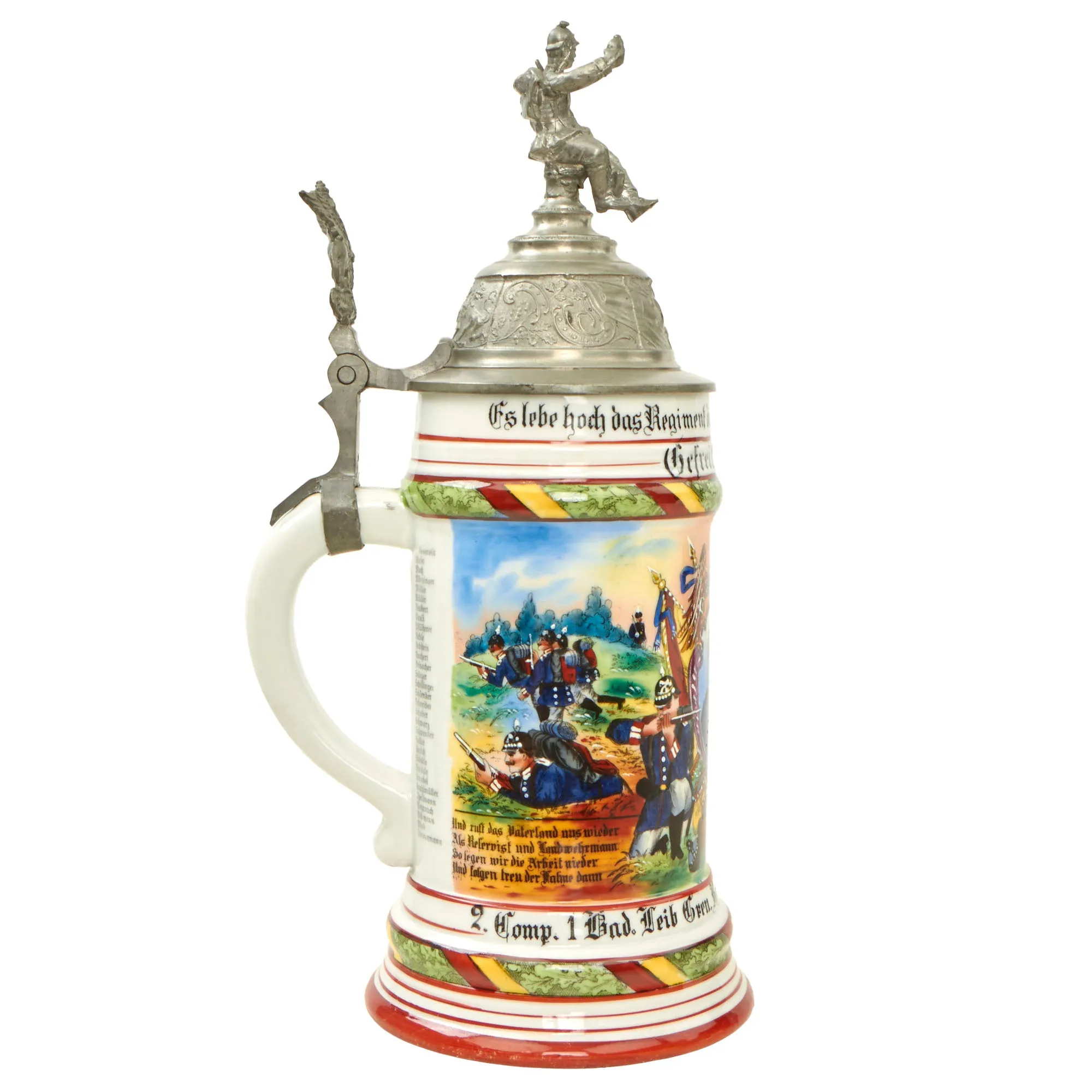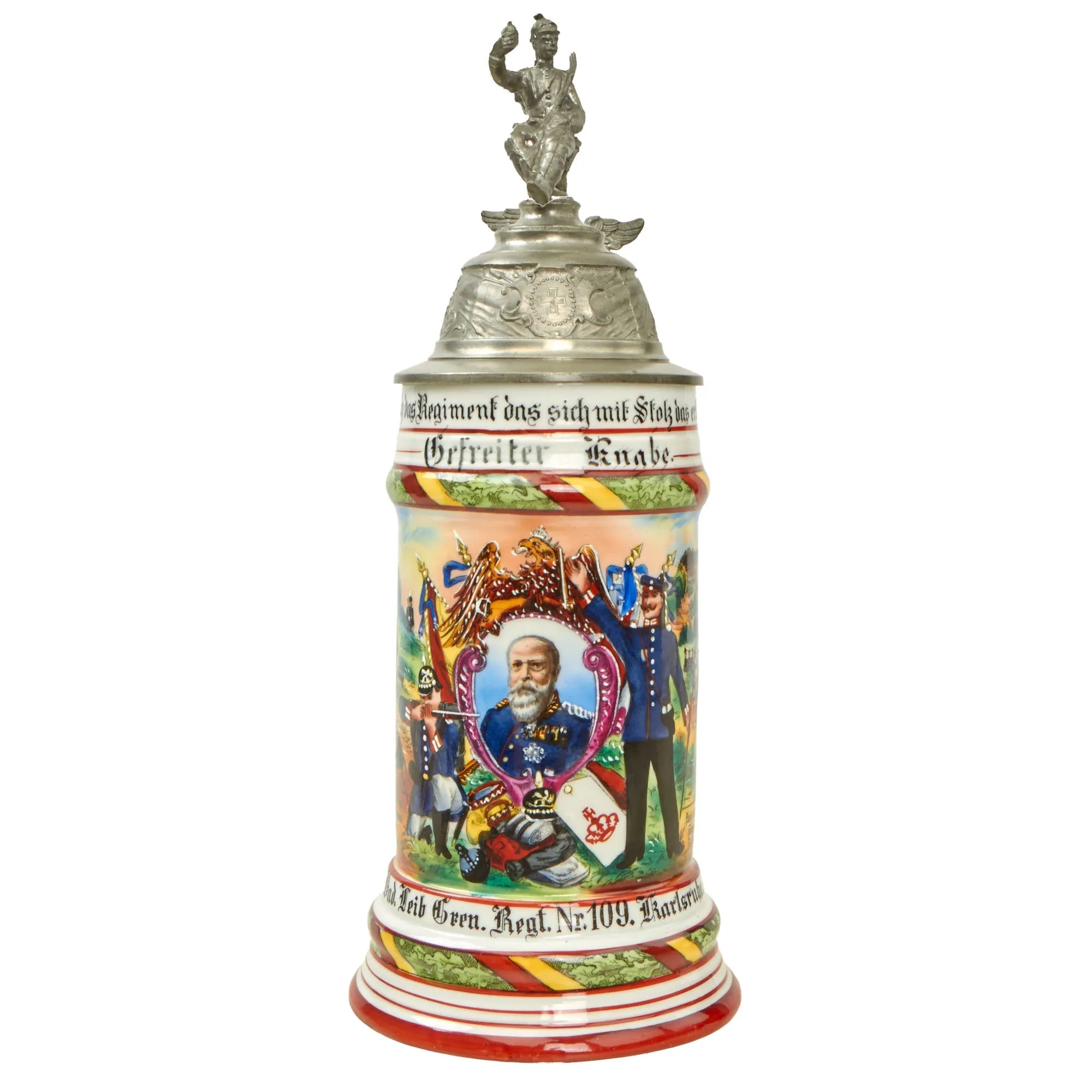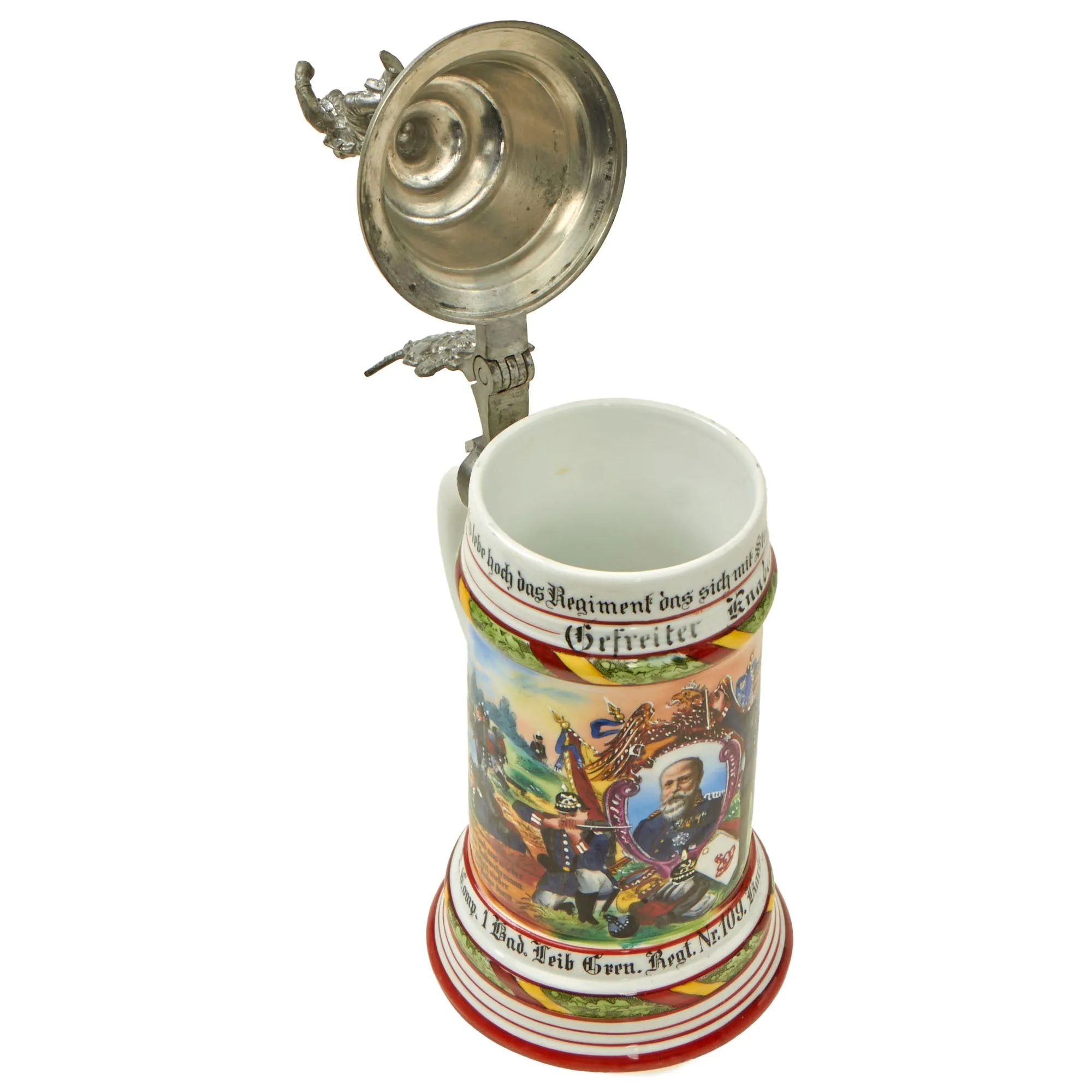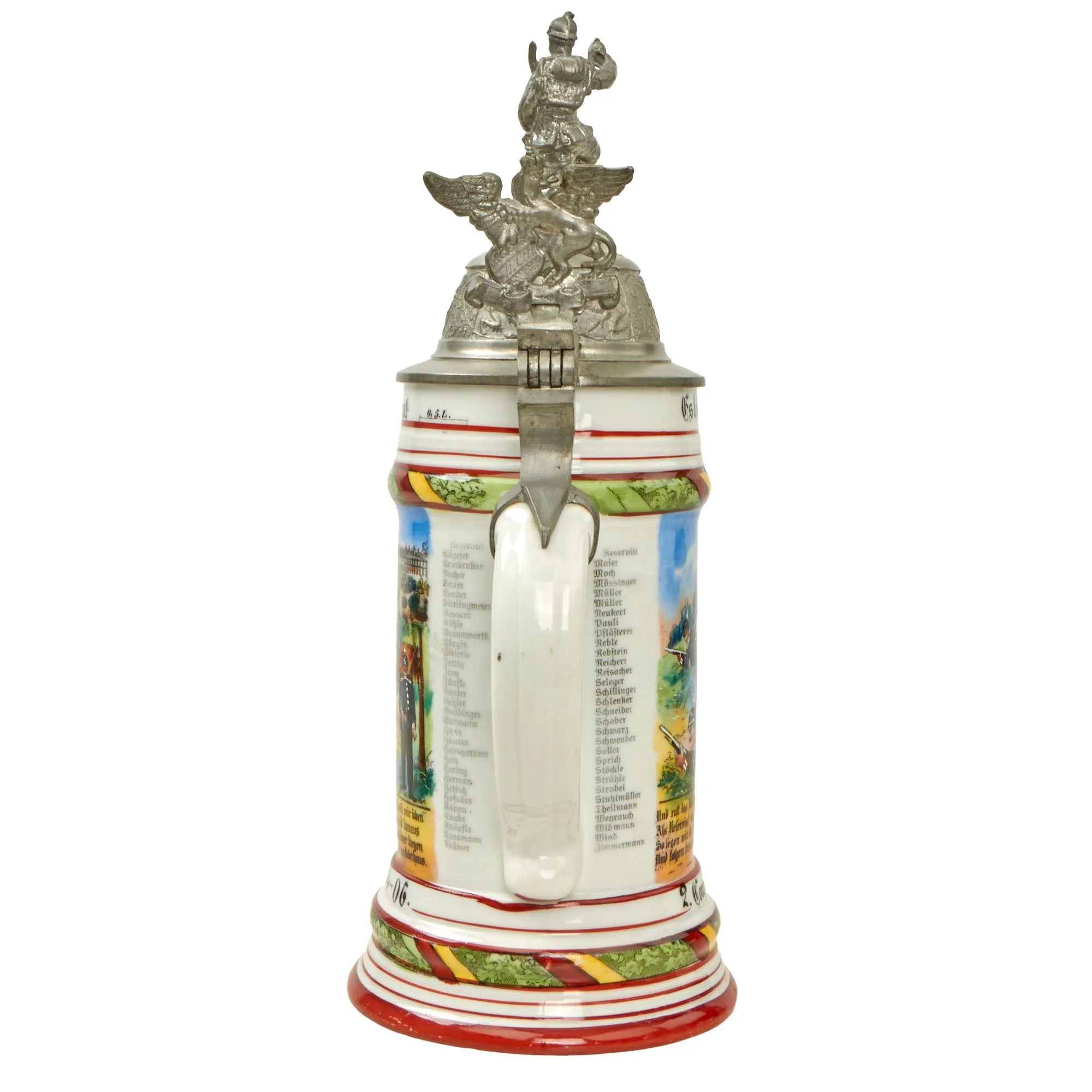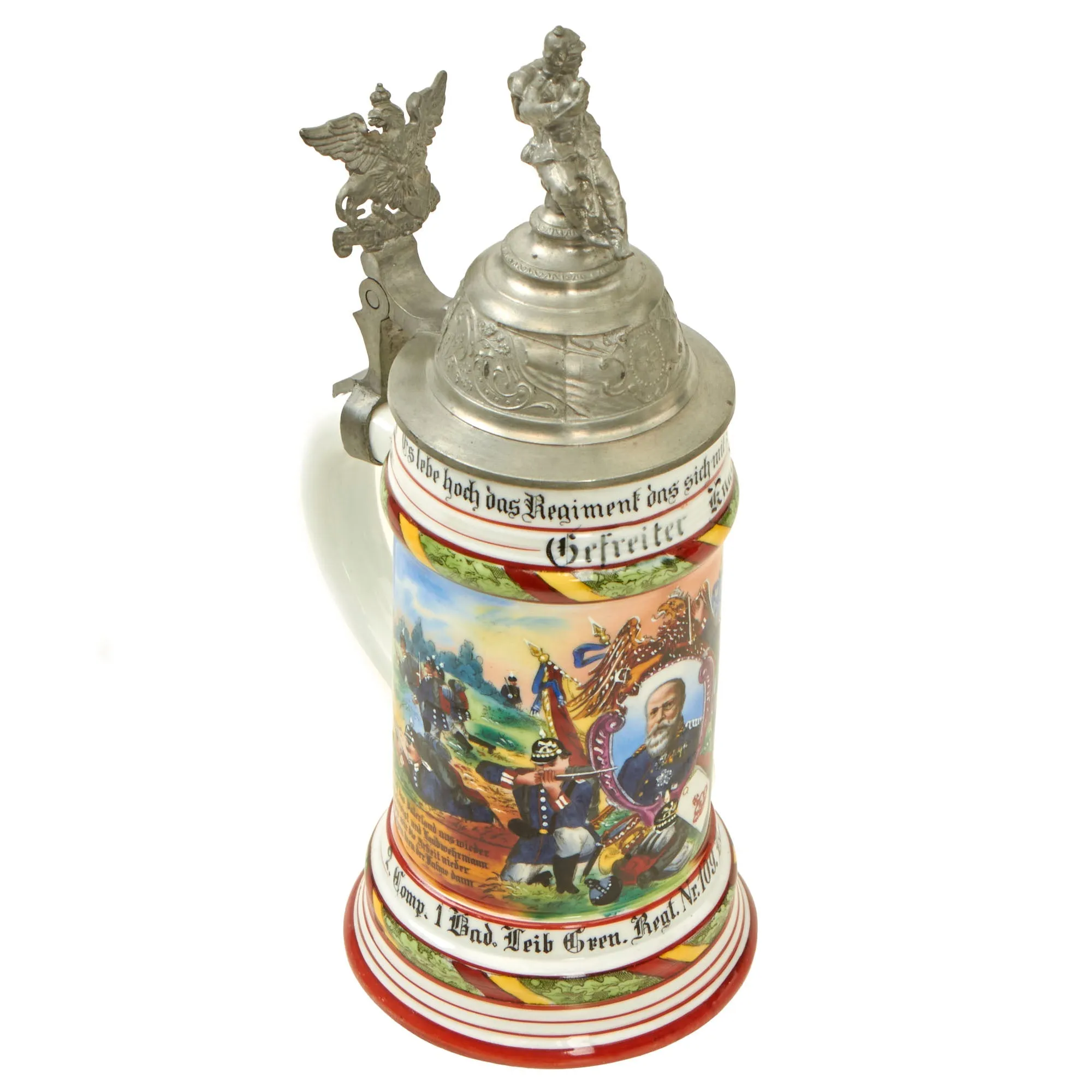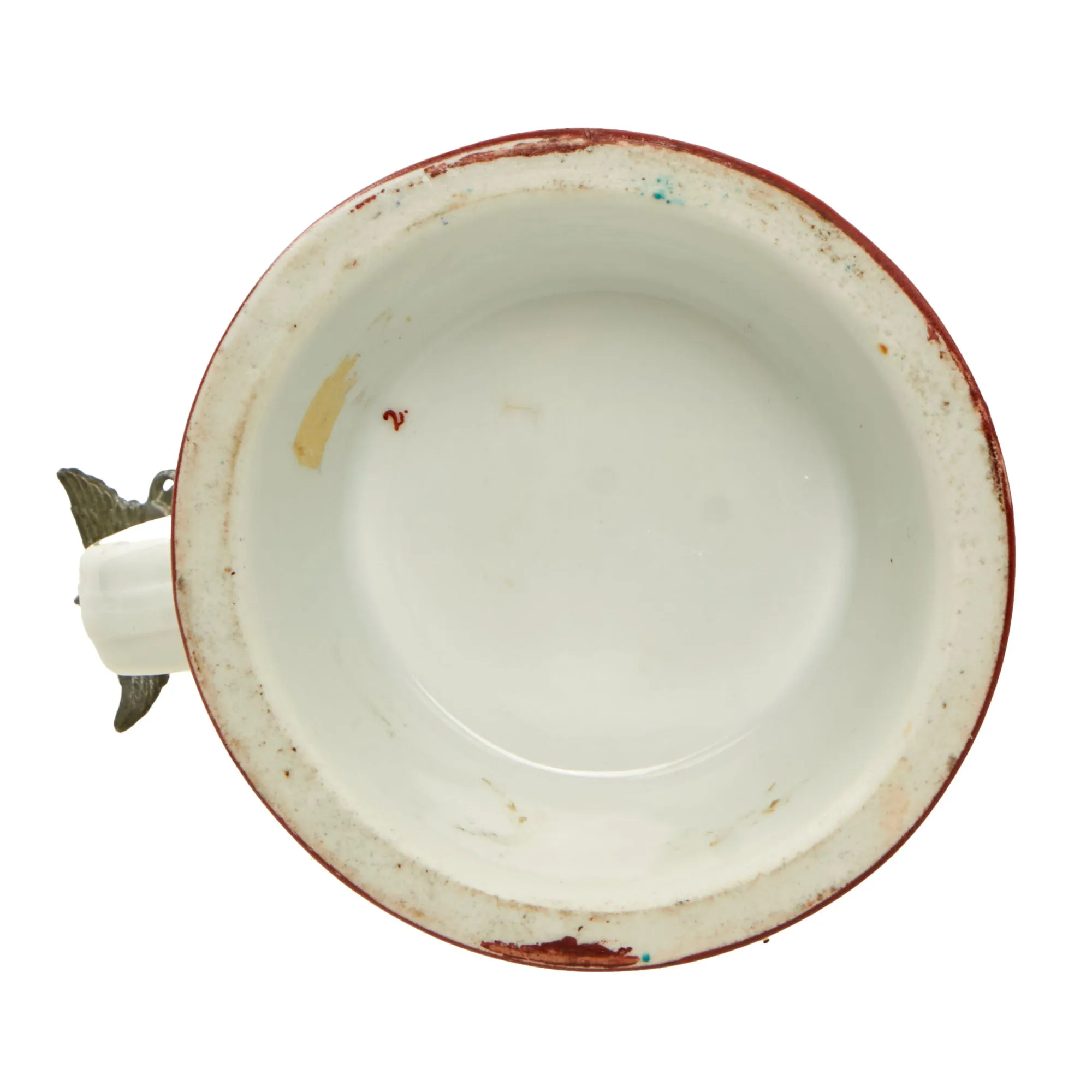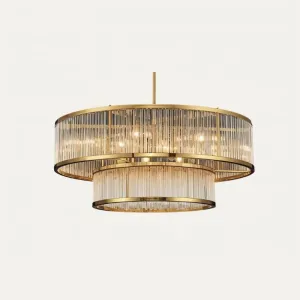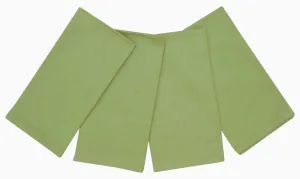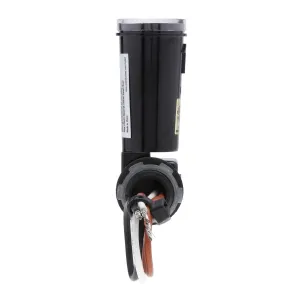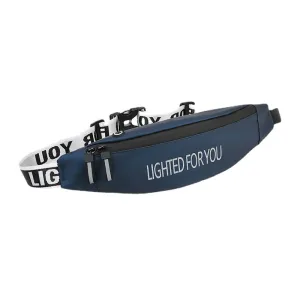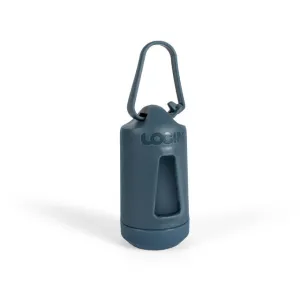Original Item: Only One Available. Perhaps no other collectible is so shrouded in myth, misinformation and mistaken identity as German regimental steins. These pieces have been steadily reproduced since the 1960s and most experts agree reproductions far outnumber authentic examples. Yet few buyers other than stein specialists know how to identify the fakes. We have examined this stein thoroughly, with reference to several websites such as and , and this one has all of the correct aspects for being original.
The majority of authentic German regimental beer steins were produced between about 1890 and 1914. During this time, military service was compulsory in Germany. Most men would take basic training between 17 and 20 and then enter the reserves until age 40. A group of men would enter a unit together, stay in the same unit for training and be discharged as a unit. This sense of togetherness fostered the custom of buying souvenirs with the unit name, insignias and decorations as a keepsake of military service. Many souvenir items were available such as pipes, clocks, flasks and especially steins. Rosters of names from your unit, or regiment, could be added to the steins and these became known to collectors as "regimental steins."
Authentic ca. 1890-1914 steins were available in pottery, porcelain, glass and metal. Regardless of what the stein was made of, almost all had pewter lids. The most common sizes are half-liter and one-liter. The beginning of WW I effectively ended the production of regimental steins as labor and materials were diverted to the war.
This is a very high quality original Imperial German Regimental beer stein. It is highly decorated on the exterior, and these were generally made with lovely design on the exterior, with banners and other areas where they were customized for the specific regiment / unit that the person ordering the stein requested. These were usually ordered in groups for a particular regiment, and this example is marked for the Royal Baden 1st Life Guard Grenadier Regiment 109. The stein shows depictions of men in battle and relaxing around tents and a campfire. The bottom is marked with the following unit information:
2. Comp. 1 Bad. Leib Gren. Regt. Nr. 109. Karlsruhe. 1904-1906.
At the top below the lid is a regimental motto and the name of the owner of the stein, Gefreiter Knabe. This information tells us the rank and last name of the owner of the stein, Gerfreiter Knabe, and his unit, the 2nd Company of the Royal Baden 1st Life Guard Grenadier Regiment 109, which was stationed in Karlsruhe. Knabe served from 1904-1906. At the time Germany had mandatory military service for all able-bodied males. As a reservist he was most likely called up at the outbreak of WWI. There are also lots of other inscriptions on the body of the stein, probably patriotic phrases and maybe poems or the like.
The stein also has a list of the last names of the men in Knabe’s company, with his name being in the left column.
The hinged lid has a great Baden Wappen and the top of the lid depicts one soldier sitting and holding up his canteen. The bottom of the inside has a lovely lithopane showing a soldier bidding farewell to his beloved, a great addition to an already gorgeous stein.
There is no maker mark on the bottom of the stein, however that is not uncommon. The lid is in great shape, and the joint with the hinge is still solid, though it is loose on the handle.
The stein measures approximately 11½” inches in height, and is 4 1/2" across the base. The glaze is in very good condition, showing some cracking in areas. There is no size marked, but it is most likely 0.5 Liters, the standard capacity for these.
A very impressive display item from the German Empire, ready to research and display!




